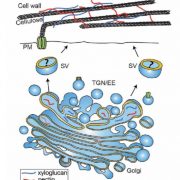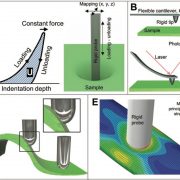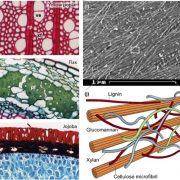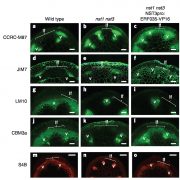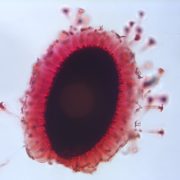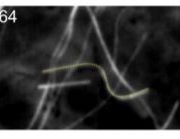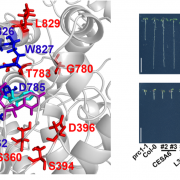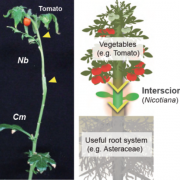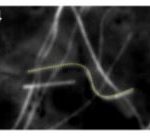Role of Cell Wall Invertase in Ovule Development
 Apart from its well-known function in Suc unloading, cell wall invertase (CWIN), an enzyme that catalyzes the hydrolysis of Suc into Fru and Glc, also plays a role in sugar signaling and plant development. As an example of CWIN playing a role in plant development, Liao et al. (10.1104/pp.20.00400) cite a previous study showing that the miniature seed phenotype of a CWIN-deficient maize (Zea mays) mutant could not be recovered by the provision of exogenous hexose. The authors now show that CWIN also functions as a positive regulator of ovule initiation in Arabidopsis. In situ hybridization revealed that CWIN2 and CWIN4 were expressed at the placenta region where ovule primordia initiated. Specific silencing of CWIN2 and CWIN4 using targeted artificial microRNA driven by an ovule-specific promoter resulted in a substantial reduction of CWIN transcript and activity, which blocked ovule initiation and promoted ovule abortion which collectively resulted in a 50% seed loss compared to the wild type. Moreover, there was no induction of carbon (C) starvation genes in the transgenic lines and supplementing newly forming floral buds with extra C failed to recover the ovule phenotype. These results demonstrate the essential role of CWIN in ovule initiation, which is most likely to occur through sugar signaling instead of C nutrient contribution. Further transcriptomic analyses performed by the authors support a model in which CWIN-generated hexose signals can be perceived by and transmitted through a cohort of plasma membrane hexose transporters or receptor-like kinases to modulate downstream candidate transcription factor and auxin signaling genes, thereby positively regulating ovule development.
Apart from its well-known function in Suc unloading, cell wall invertase (CWIN), an enzyme that catalyzes the hydrolysis of Suc into Fru and Glc, also plays a role in sugar signaling and plant development. As an example of CWIN playing a role in plant development, Liao et al. (10.1104/pp.20.00400) cite a previous study showing that the miniature seed phenotype of a CWIN-deficient maize (Zea mays) mutant could not be recovered by the provision of exogenous hexose. The authors now show that CWIN also functions as a positive regulator of ovule initiation in Arabidopsis. In situ hybridization revealed that CWIN2 and CWIN4 were expressed at the placenta region where ovule primordia initiated. Specific silencing of CWIN2 and CWIN4 using targeted artificial microRNA driven by an ovule-specific promoter resulted in a substantial reduction of CWIN transcript and activity, which blocked ovule initiation and promoted ovule abortion which collectively resulted in a 50% seed loss compared to the wild type. Moreover, there was no induction of carbon (C) starvation genes in the transgenic lines and supplementing newly forming floral buds with extra C failed to recover the ovule phenotype. These results demonstrate the essential role of CWIN in ovule initiation, which is most likely to occur through sugar signaling instead of C nutrient contribution. Further transcriptomic analyses performed by the authors support a model in which CWIN-generated hexose signals can be perceived by and transmitted through a cohort of plasma membrane hexose transporters or receptor-like kinases to modulate downstream candidate transcription factor and auxin signaling genes, thereby positively regulating ovule development.


